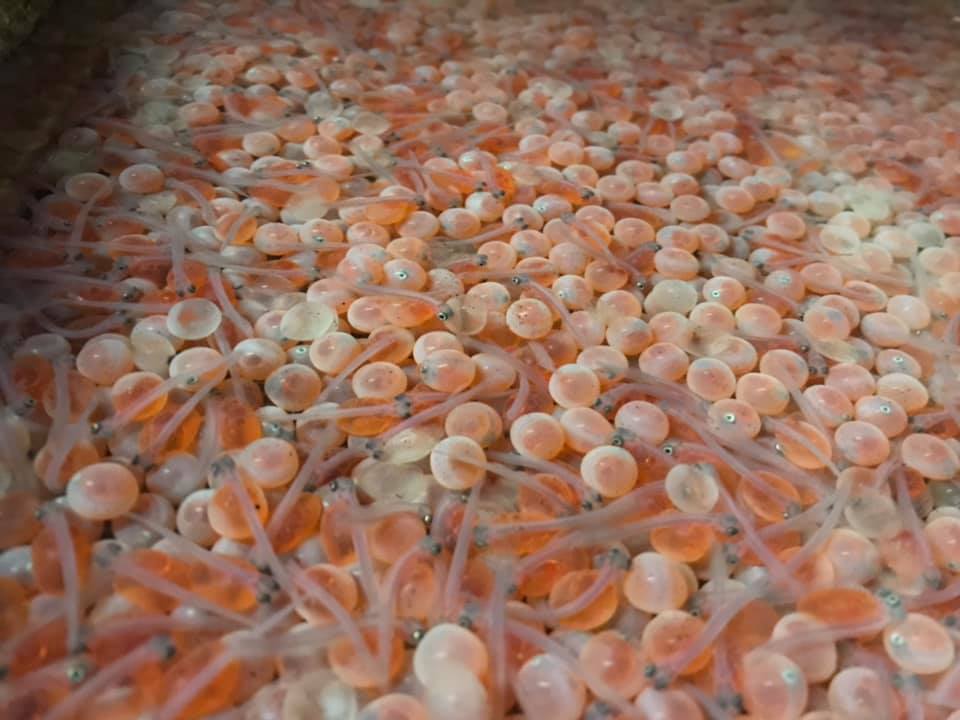The Carrier-Sekani Tribal Council and the Spruce City Wildlife association in Prince George are one year into a partnership aiming to save the Endako Chinook salmon stocks.
The stock, monitored by the Carrier-Sekani, has gotten so low it is classified as ‘functionally extinct’.
According to Spruce City Wildlife, the partnership was formed when the Tribal Council reached out to the association to help with stock enhancement.
The fish are now being raised in the hatchery and will be eventually released back to the Endako.
“I believe that past numbers, and we are going back 30-plus years, I believe the stock used to run into about 1000,” said Dustin Snyder, VP for Spruce City Wildlife.
In recent years, that number has dropped to between 30-50 returning fish a year, decreasing sex ratio and genetic diversity in the population.
The Carrier-Sekani Tribal Council provided salmon ‘milt’ or sperm, that had been cryogenically frozen 20 years ago to fertilize new eggs.
Early reports of the project have been positive, and once the fish reach 3 grams, they will be released.
“We are looking at potentially putting the fry into a tank, and actually flying them out to the spawning grounds, and due to the sensitivity of the watershed and the small size of the fish, we would have volunteers hike in and release the fish by hand,” Snyder said.
“It was planned early last summer, and then when the salmon showed up in mid-September, we were all hands on deck August and September to ensure we get a crew together and discuss how it was going to go and make sure everything was in place at the hatchery.”
The Endako Chinook was once a significant salmon population, but as time goes on their numbers have dropped off for several reasons explained Snyder.
“The distance that these Chinook need to travel in order to get to their spawning grounds, we are talking all the way from the estuary in Vancouver and then all the way up.”
Snyder attributes the low population partially to the approximate 1300 kilometer spawning trip made by the salmon, and partially to rapidly changing ocean conditions.
“We are hoping to carry this on for quite a few years in the future to sustain this stock and hopefully grow it without it going extinct.”
Something going on in the Prince George area you think people should know about?
Send us a news tip by emailing [email protected].







